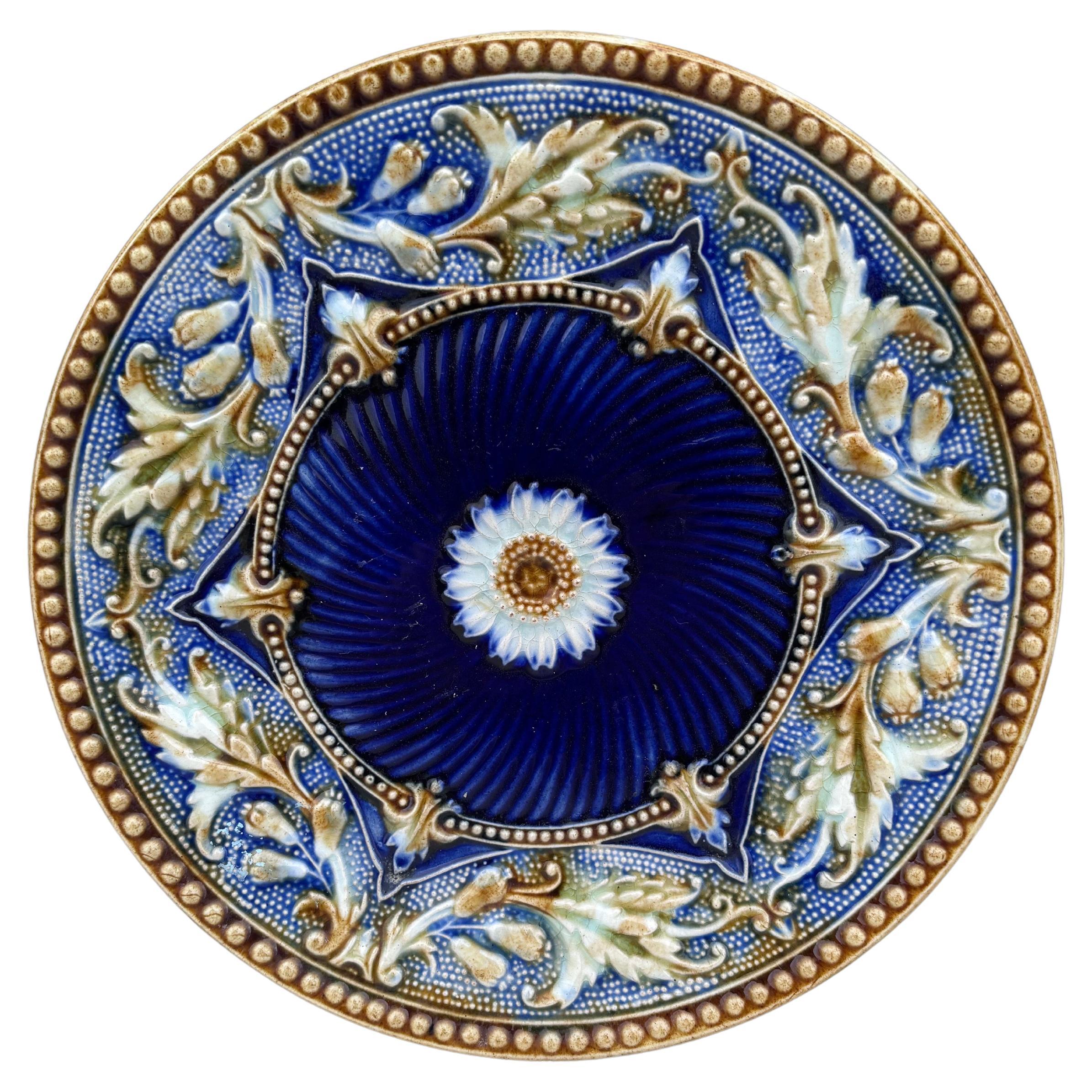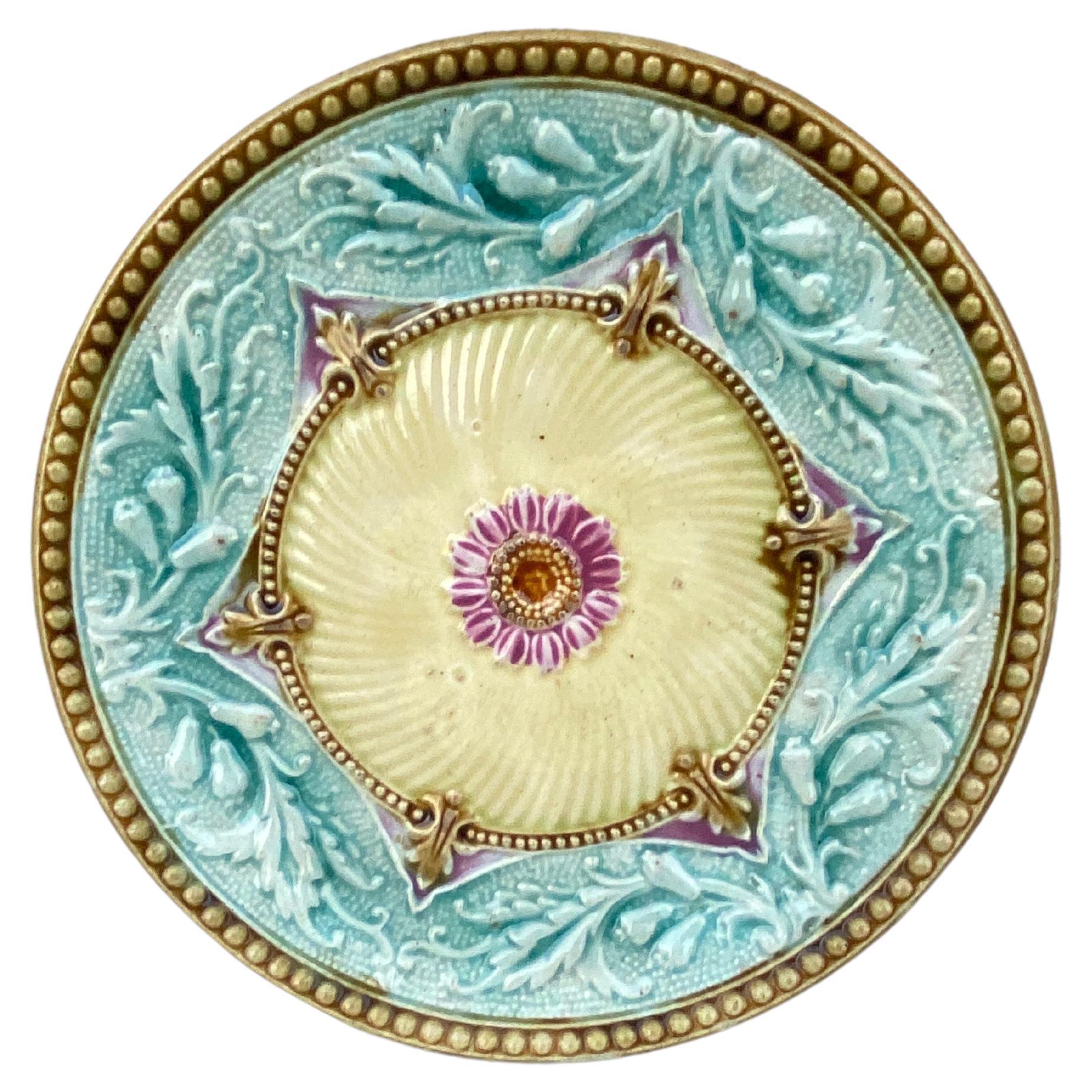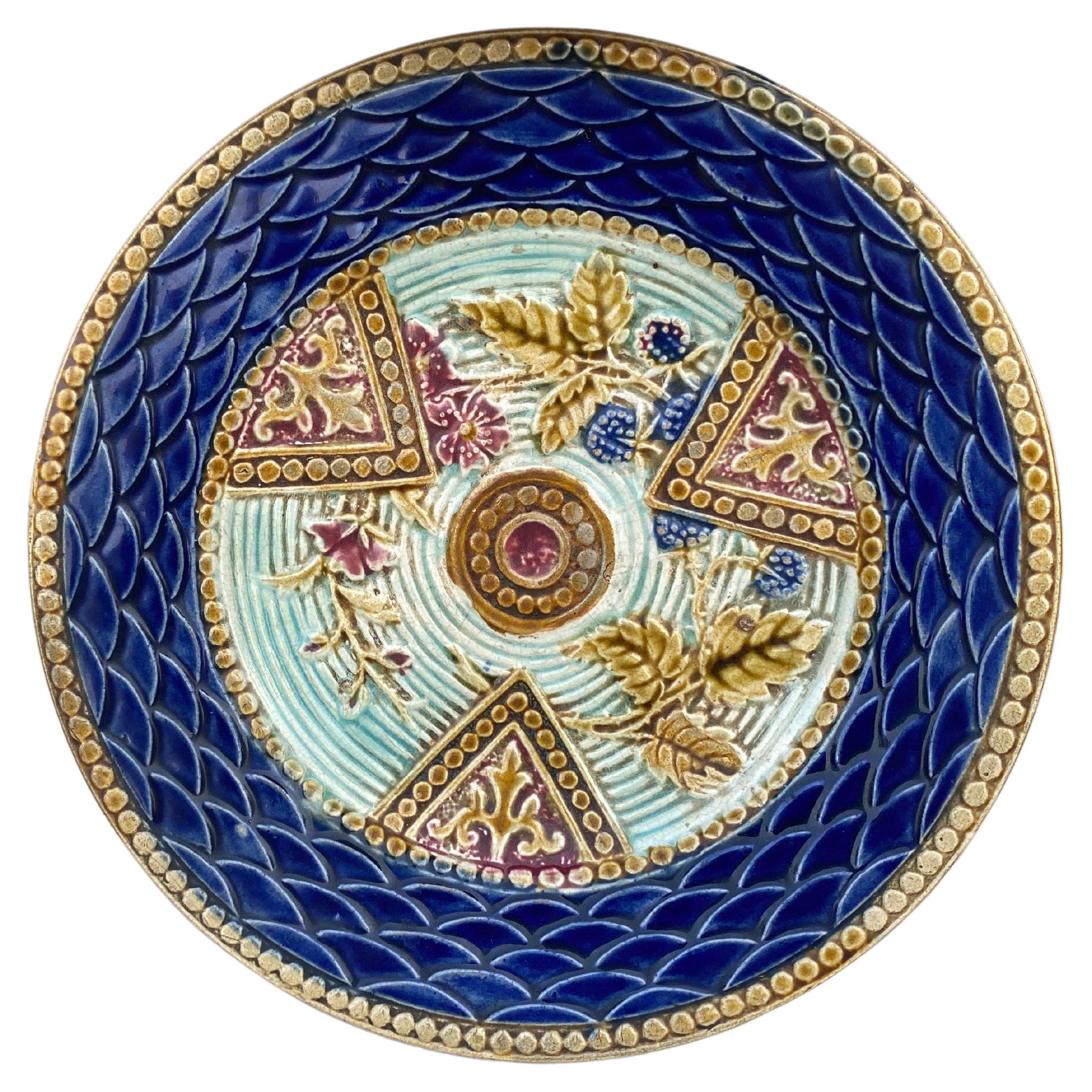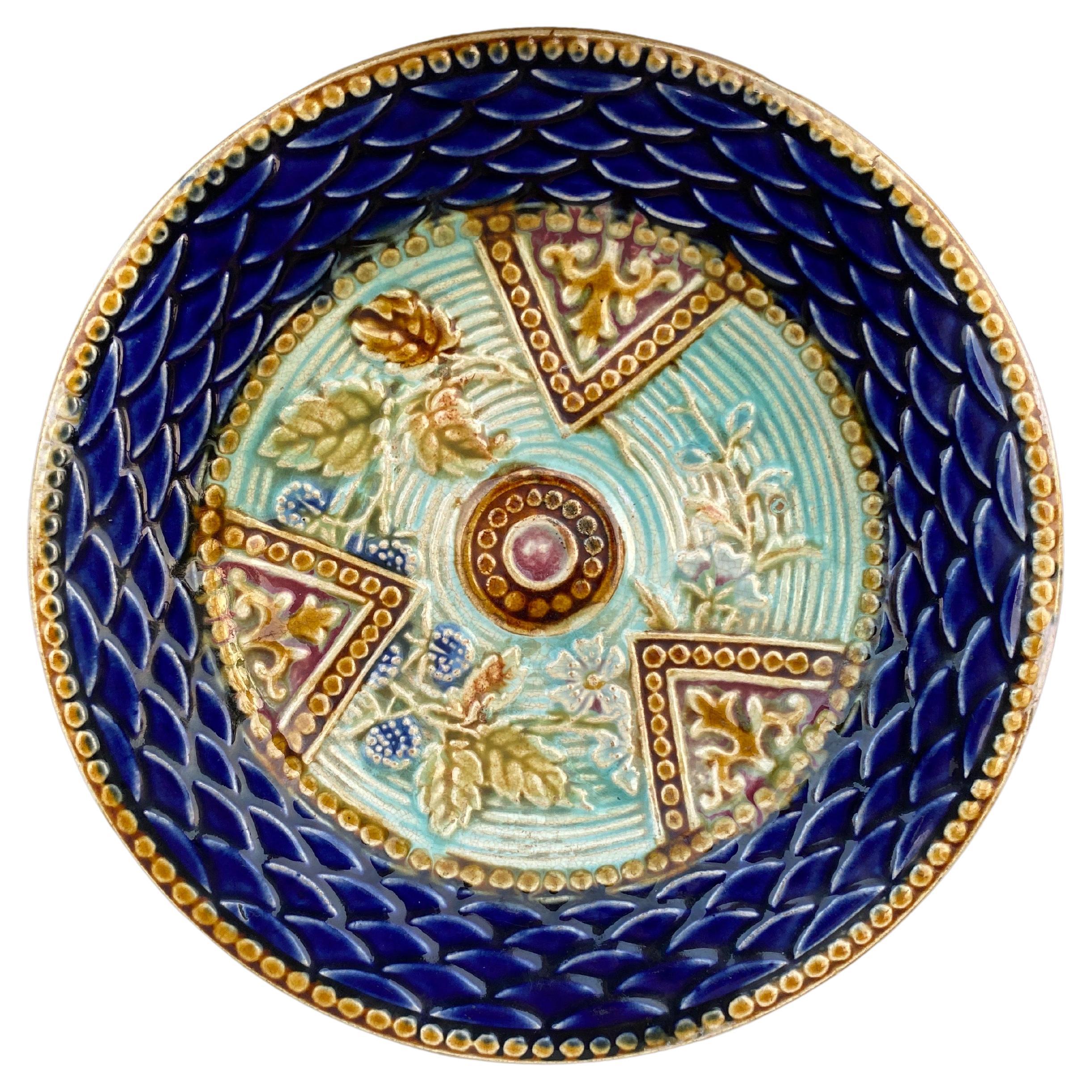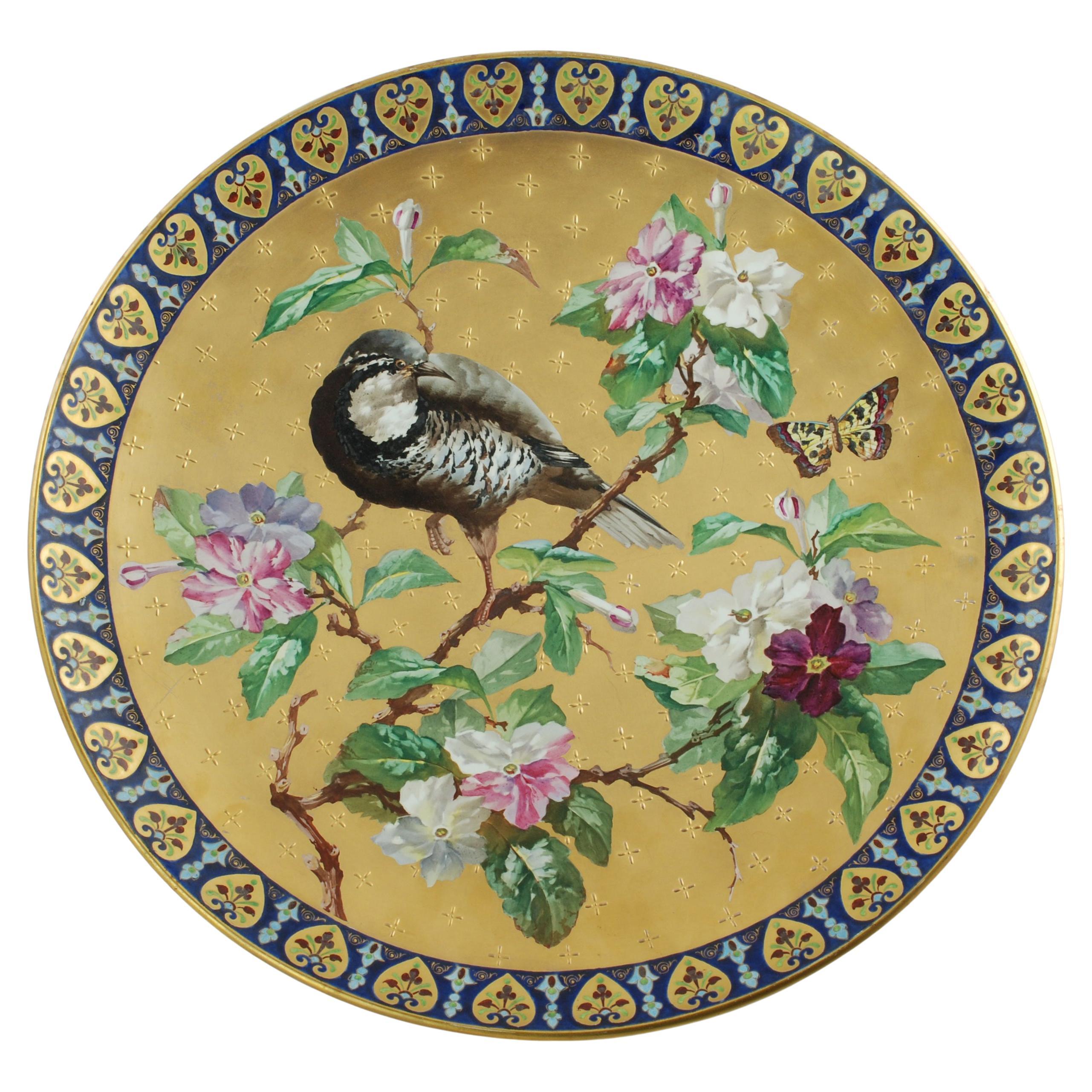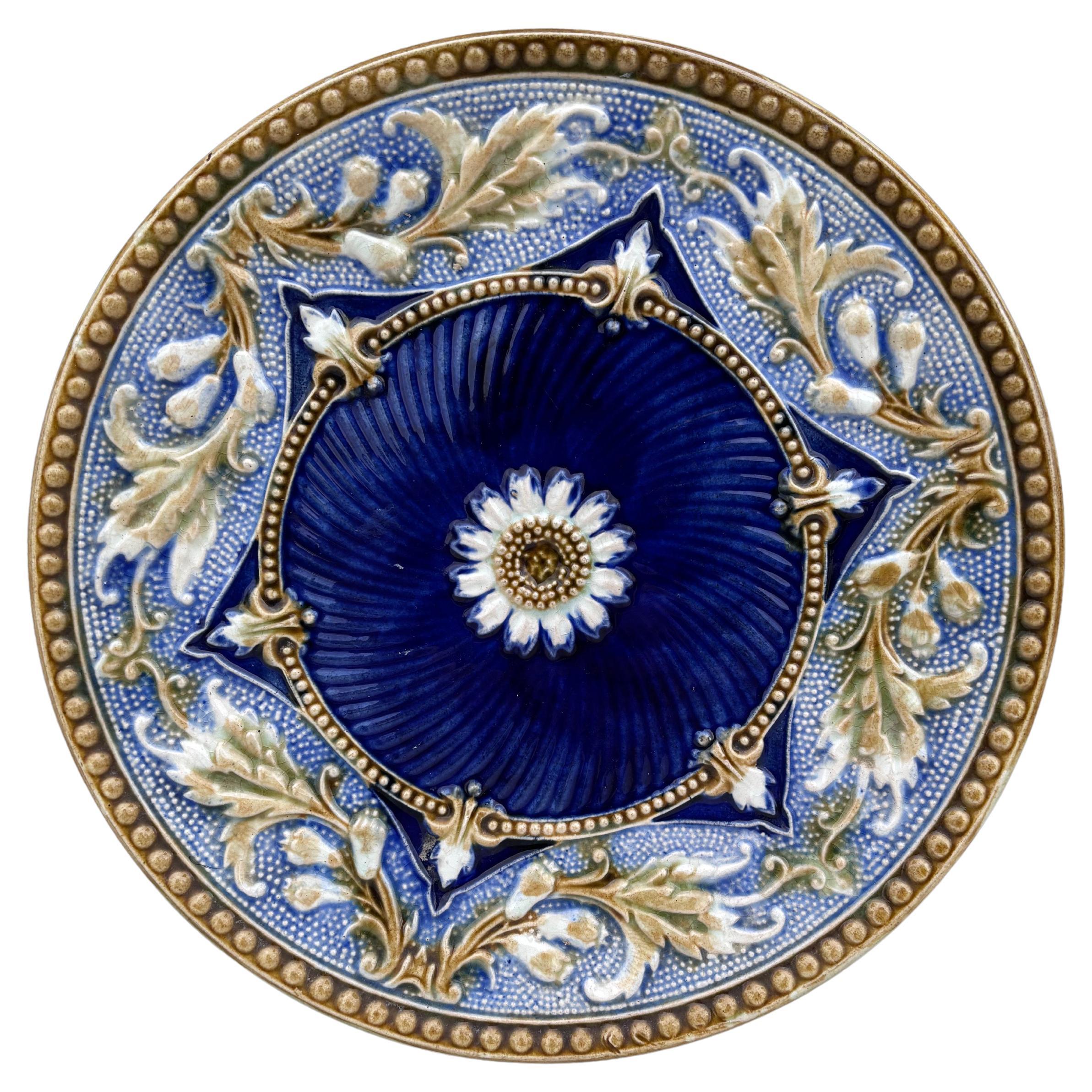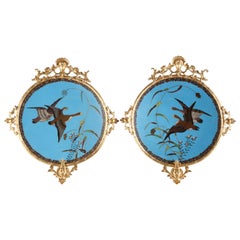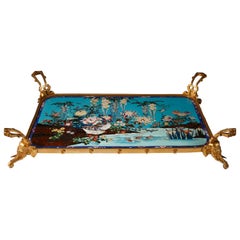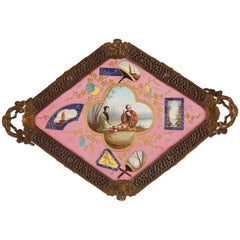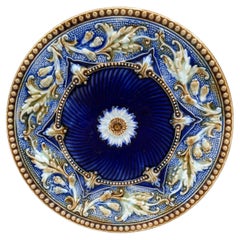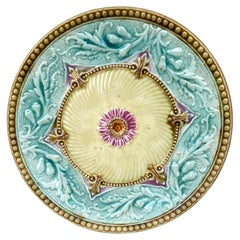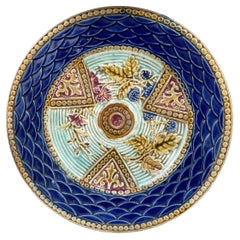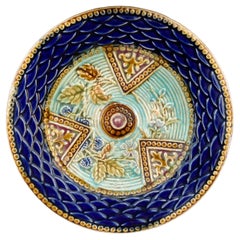Items Similar to Aesthetic Movement Enameled Plate Attributed to Elkington and A. Willms, c. 1875
Want more images or videos?
Request additional images or videos from the seller
1 of 6
Aesthetic Movement Enameled Plate Attributed to Elkington and A. Willms, c. 1875
$16,085.02
£11,930.81
€13,500
CA$22,025.78
A$24,488.46
CHF 12,818.23
MX$300,342.88
NOK 163,208.53
SEK 154,088.19
DKK 102,756.26
Shipping
Retrieving quote...The 1stDibs Promise:
Authenticity Guarantee,
Money-Back Guarantee,
24-Hour Cancellation
About the Item
Important tray made in gilded bronze and “cloisonné” enamel attributed to Elkington and Willms. Ornamented with a centering polychrome enameled peacock plaque, made of very high standard quality, mounted on a gilt-bronze dish, decorated in relief with Japanese Nô theater masks.
The great Birmingham firm of Elkingtons, was largely the creation of George Richards Elkington (1800-1865), who worked from 1824 in Birmingham as a manufacturer of silver-mounted scent bottles. By 1829 the business had expanded sufficiently for a branch to have been established in London. In the late 1830s the Elkingtons began making experiments to apply the principles of electro-metallurgy to gilding and plating with silver and in 1840 the patent was at last taken out. Elkingtons owed their rise to a position amongst the most important silversmiths of the country to their exploitation of this new process and the two of the most famous designers then employed, both of them French, Albert Wilms (1827-1899) and Morel-Ladeuil (1820-1888), who helped to make Elkingtons’ reputation with their elaborate exhibition pieces.
Albert Willms was apprenticed as modeler and engraver to Klagman, Dieterle and Constant in Paris before working for Morel & Co. in London in 1848. On his return to Paris he was employed by the great Parisian silversmiths including Christofle and Froment-Meurice, for whom he designed pieces to be presented at the 1855 Universal Exhibition in Paris. It was during this period that he joined the firm of Elkington in London as head decorator. Elkington was soon to become one of the first to produce refined pieces in “champlevé” enamel in the Chinese and Japanese styles, which were presented with great success at the London Universal Exhibition in 1862 (see Masterpieces of Industrial Art & Sculpture at the International Exhibition 1862, J.B. Waring, London, 1863, III, pl. 211). Willms’ “champlevé” enamels could not be compared, however, with the delicate “cloisonné” enamels exhibited by Japan at the Universal Exhibition in Paris in 1867. This explains why Elkington adapted the ancient Japanese technique to produce pieces according to European taste and custom. Followings the 1867 Exhibition all the major European artists rivaled in ingenuity for the 1873 Universal Exhibition in Vienna. In London Albert Willms presented his luxurious vases and cups in “cloisonné” enamel for Elkington (see Illustrations of Art Manufacturers in the Precious Metals exhibited by Elkington & Co., Inventors, Patentees and Manufactures of electroplate, 1873), whilst in Paris, Ferdinand Thesmar (1843-1912) produced in the workshops of Ferdinand Barbedienne (1810-1892) a tray decorated with a golden pheasant in “cloisonné” enamel on copper and Emile-Auguste Reiber (1826-1893) designed for the Christofle firm, a large clock with matching candelabras in the Japanese style (Musée d’Orsay, Paris, Inv. O.A.O. 1360-1361) with “cloisonné” enamels executed by Antoine Tard. Albert Willms never the less became a specialist of “cloisonné” enamel on gilt metal between 1870 and 1876. The Universal Exhibitions where Elkington presented to the public his latest creations in the Japanese style, assured him a resounding success, as at the Philadelphia Exhibition in 1876 with an extensive set of vases and dishes in “cloisonné” enamel (reproduced in Contributions to the Centennial and International Exhibition at Philadelphia, 1876, London, 1876). Referring to his enamels the critics said “They surpass by far modern Chinese and Japanese works and approach the exquisite beauty of ancient Japanese pieces”.
- Attributed to:W. Albert Willms (Designer)Elkington & Co. (Manufacturer)
- Dimensions:Height: 1.19 in (3 cm)Diameter: 20.87 in (53 cm)
- Style:Aesthetic Movement (In the Style Of)
- Materials and Techniques:
- Place of Origin:
- Period:
- Date of Manufacture:circa 1875
- Condition:Wear consistent with age and use.
- Seller Location:PARIS, FR
- Reference Number:Seller: 1048/51stDibs: LU3860313525992
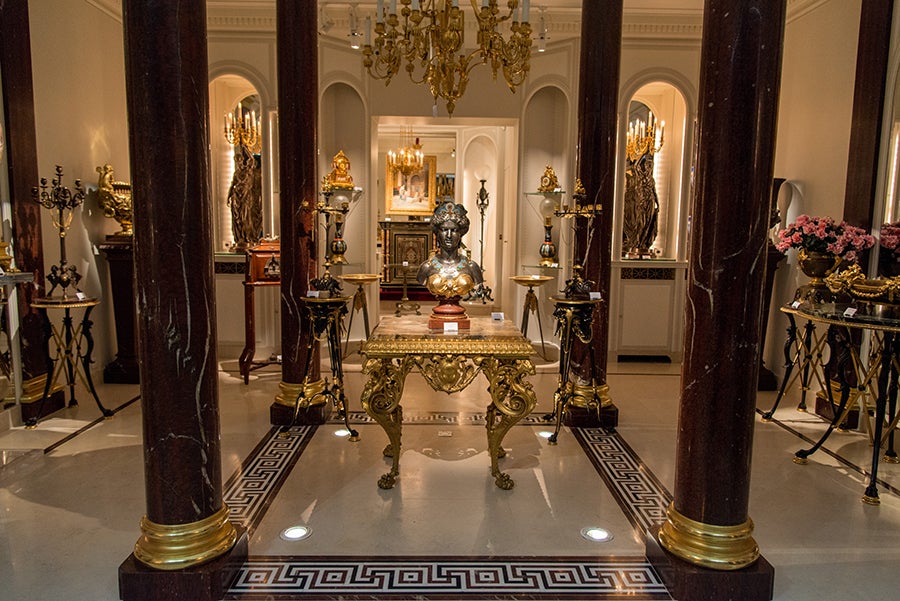
About the Seller
4.9
Vetted Professional Seller
Every seller passes strict standards for authenticity and reliability
Established in 1997
1stDibs seller since 2018
87 sales on 1stDibs
Typical response time: 2 hours
Associations
International Confederation of Art and Antique Dealers' Associations
- ShippingRetrieving quote...Shipping from: PARIS, France
- Return Policy
Authenticity Guarantee
In the unlikely event there’s an issue with an item’s authenticity, contact us within 1 year for a full refund. DetailsMoney-Back Guarantee
If your item is not as described, is damaged in transit, or does not arrive, contact us within 7 days for a full refund. Details24-Hour Cancellation
You have a 24-hour grace period in which to reconsider your purchase, with no questions asked.Vetted Professional Sellers
Our world-class sellers must adhere to strict standards for service and quality, maintaining the integrity of our listings.Price-Match Guarantee
If you find that a seller listed the same item for a lower price elsewhere, we’ll match it.Trusted Global Delivery
Our best-in-class carrier network provides specialized shipping options worldwide, including custom delivery.More From This Seller
View AllFine Pair of 'Cloisonne' Enamel Dishes Attributed to A. Giroux, France, c. 1880
By Alphonse Giroux et Cie
Located in PARIS, FR
Beautiful pair of polychrome “cloisonné” enamel display dishes attributed to A. Giroux, decorated with birds flying over rushes and flowers on a sky blue background, bordered with a stylized foliate motif frieze. Finely mounted with gilded bronze ornaments such bamboos, masks and scrolls.
Alphonse Giroux and company, famous curiosity and luxury goods shop was situated at No. 7 rue du Coq-Saint-Honoré and in business from the time of the Consulate until the end of the Second Empire. The company was founded by Francois-Simon-Alphonse and continued in 1838 by his two sons, Alphonse-Gustave (1810-1886) and André (1801-1879).
The father became a close associate of the royal family and specialized in the manufacture of refined items for gifts, winning a silver medal at the in 1834. Kings Louis XVIII and then Charles X were both supplied with gifts for “The Children of France” by Giroux. Making progressively small furniture, they were mentionned for the first time in 1837 in the class “cabinet...
Category
Antique 1880s French Decorative Dishes and Vide-Poche
Materials
Enamel, Bronze
$11,438 Sale Price / set
20% Off
Fine Orientalist Dish by Lebeuf, Milliet & Cie, France, Circa 1845
By Lebeuf Milliet & Cie Creil Montereau
Located in PARIS, FR
Signed by Cojoie AD, the decor-painter
and on the reverse, LM et Cie, the making mark of the manufacture
A circular hand painted pottery charger, decorated with an orientalist sc...
Category
Antique 1840s French Decorative Dishes and Vide-Poche
Materials
Earthenware
$8,102 Sale Price
45% Off
Japanese Style Tray Attributed to L.-C. Sevin & F. Barbedienne, France, c. 1860
By Louis-Constant Sevin, Ferdinand Barbedienne
Located in PARIS, FR
Rich landscape in cloisonné enamel on blue and brown background imitating Aventurine stone, attributed to L.C. Sevin and F. Barbedienne. The decor represents a river surrounded by wi...
Category
Antique 1860s French Japonisme Centerpieces
Materials
Enamel, Bronze
Charming Japanese Style Tray Attributed to l'Escalier de Cristal, France, c.1880
By L'Escalier de Cristal
Located in PARIS, FR
Rare Japanese style diamond-shaped tray attributed to l'Escalier de Cristal, representing lake landscapes in cartouches, and adorned in its center with a lunch scene with a Japanese couple in traditional dress, all highlighted by a gilded decor of flowering branches on a pink porcelain background.
The whole is framed by a gilded openwork bronze mount ending on the sides by two handles.
“L’Escalier de Cristal”, an old and famous Parisian firm, specialized in glass products and ceramics but also suggested furniture and bronze sculptures. It was led from 1885 to 1923 by Emile Pannier’s sons, who gave the name of Pannier Frères to the society, located at the corner of Scribe street and Auber street, next to the new built Paris Opera house. Their Japanese style creations were among many others much appreciated by the critics and the public. They were awarded many medals at various exhibitions, such as the Gold medal at the 1900 Paris Universal Exhibition.
Lots of artists participated in that world success, such as Emile Gallé, who gave to Pannier Frères the exclusive rights of some of his models, or François-Eugène Rousseau, who designed many vases and gave the model of his successful Japanese style dining-set as well. This set was made by the Creil et Montereau Manufacture. In the Japanese style furniture...
Category
Antique 1880s French Japonisme Decorative Dishes and Vide-Poche
Materials
Bronze
Planter and Decorative Dish Attributed to Samson & Cie, France, Circa 1880
By Samson & Cie
Located in PARIS, FR
Important porcelain planter and decorative dish attributed to Samson & Cie.
They are decorated with golden and red friezes of intertwined lotus, fruits and flower cups, fans and two...
Category
Antique 1880s French Planters, Cachepots and Jardinières
Materials
Porcelain
Elegant Pair of Japanese Style Dishes, France, Circa 1875
Located in PARIS, FR
Pair of 18th century soft-paste porcelain dishes finely decorated in the 19th century with medallions representing Japanese theatre characters dressed in traditional costumes, beautiful gold-embossed ornament on a polychrome background.
These dishes are to be linked with the production of the Sèvres Manufacture.
The Manufacture de Sèvres, factory of soft-paste porcelain, was founded in 1738 at Vincennes by bankers and financiers hoping to discover the secret of making hard-paste porcelain, used in Meissen at the time. In 1753, King of France Louis XV became the main shareholder of the factory, transferring it to Sèvres, closer to Versailles and the castle of Bellevue, owned by la Marquise de Pompadour, very interested by Sèvres’ research and supportive of the works. In 1759, the King became the sole shareholder of the Manufacture, making it the property of the French Crown. From this day on, the Sèvres artworks were marked with the royal seal, two intertwined “L’s”, as well as a letter indicating the year of creation. The period between 1756 and 1779 represents the most prosperous years for the factory. To support Sèvres, Louis XV made sumptuous orders offered as diplomatic presents. The main artists at the time, such as painters Boucher and Bachelier or sculptors Falconet and Boizot, worked for the factory. Research on the making of hard-paste porcelain kept going and succeeded after 1769. From this year, Sèvres successfully produced both soft-paste and hard-paste porcelain. It is also during this period that the most beautiful and singular colors were invented: bleu lapis in 1752, bleu celeste in 1753, green in 1756, famous pink in 1757 and royal blue in 1763. The most significant pieces are ornamented with scenes inspired by engravings from famous painters (Boucher) and ornamentalists. They are also decorated with garlands, bunches of flowers, trophies, gildings… The fine quality of Sèvres’ production covers a large range of statuettes (Falconet’s threatening Love), full services (Rambouillet’s service is presented to Marie-Antoinette in 1788), as well as utilitarian or ornamental items. The role played by haberdashers in the production’s development is essential. They originated trends around Sèvres-designed products, such as Daguerre who decorated his most precious furniture with porcelain...
Category
Antique 1870s French Porcelain
Materials
Porcelain
$5,242 Sale Price / set
63% Off
Free Shipping
You May Also Like
19th Century French Majolica Plate
By Orchies
Located in Austin, TX
Rare blue French Majolica plate with flowers and acanthus leaves Orchies, circa 1890.
Category
Antique 1890s French French Provincial Dinner Plates
Materials
Ceramic
19th Century French Majolica Plate
By Orchies
Located in Austin, TX
Lovely colorful French Majolica plate with flowers and acanthus leaves Orchies, circa 1890.
Category
Antique 1890s French French Provincial Dinner Plates
Materials
Ceramic
French Majolica Plate Onnaing, Circa 1890
By Onnaing
Located in Austin, TX
French Majolica plate Onnaing Circa 1890.
flowers and blackberries.
Category
Antique 1890s French Rustic Dinner Plates
Materials
Ceramic
French Majolica Plate Onnaing, Circa 1890
By Onnaing
Located in Austin, TX
French Majolica plate Onnaing Circa 1890.
flowers and blackberries.
Category
Antique 1890s French Rustic Dinner Plates
Materials
Ceramic
19th Century French Creil & Montereau Hand Painted Aesthetic Movement Charger
By Creil et Montereau
Located in Cincinnati, OH
This outstanding hand painted 19th century French ceramic charger was made by Hautin Boulenger & Cie at Creil & Montereau. The highly detailed Aesthetic Movement charger features polychrome decoration depicting a Japanese quail perched in a flowering cherry tree bearing vivid green foliage. The bird's gaze is fixed on a colorful butterfly with intricately patterned wings which is located off to one side. The image is set on a gilt ground which bears a series of repeating raised gilt motifs. The charger's shoulder is finished in cobalt blue with stylized gilt hearts separated by light blue floral and foliate elements.
The 4lb 11oz charger bears an impressed mark used by Creil et Montereau between 1876-1884. The foot rim is not pierced.
This beautifully executed hand painted French charger...
Category
Antique Late 19th Century French Aesthetic Movement Ceramics
Materials
Ceramic
19th Century French Majolica Plate
By Orchies
Located in Austin, TX
Rare blue French Majolica plate with flowers and acanthus leaves Orchies, circa 1890.
Category
Antique 1890s French French Provincial Dinner Plates
Materials
Ceramic
More Ways To Browse
Aesthetic Movement Bronze
Exhibition 1862
Antique Enamel Bowls
Plates Chinese Enamel
Gold Plated Dishes
Enamel Copper Plate
Japanese Enamel Plate
Dishes Made In England
Chinese Dishes Sets
French Enamel On Copper
Antique Dishes From England
Enamel Peacock
Peacock Plate
Antique Japanese Plates And Bowls
Enameled Metal Bowls
Elkington Plate
Silver Plated Elkington
Antique Japanese Bottles
